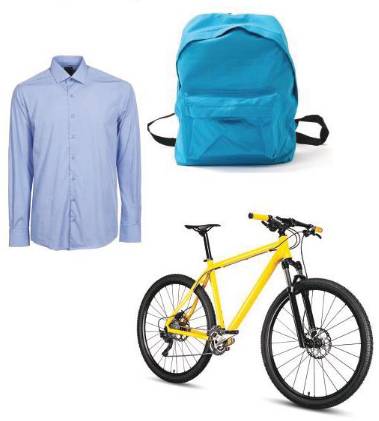Hãy nhập câu hỏi của bạn vào đây, nếu là tài khoản VIP, bạn sẽ được ưu tiên trả lời.

Conversation 1:
Person A: Hey, do you know what single-use products are?
Person B: Yeah, they are products that are designed to be used once and then thrown away.
Person A: Ah, got it. So things like plastic straws and disposable cups, right?
Person B: Exactly! Those are some examples of single-use products.
Conversation 2:
Person A: Can you explain what global warming is?
Person B: Sure! Global warming refers to the long-term increase in Earth's average temperature due to the buildup of greenhouse gases in the atmosphere.
Person A: I see. So it's caused by activities like burning fossil fuels and deforestation?
Person B: Yes, exactly! Those activities release greenhouse gases, trapping heat and causing the Earth's temperature to rise.
HaNa✿

Tham khảo
- Ask to borrow a book from your classmate.
A: Can I borrow your book, please?
B: Sure. Here you are! But I need it on Thursday afternoon, can you return it for me on Thursday morning?
A: Of course. Thank you
- Request some advice on how to do your science project.
A: Could you give me some advide on how to do my science project?
B: Certainly. You may go to the library and borrow some book about your science project and read carefully. It has all the informations that you need.

1.
A: Can you help me with our maths homework? It's quite difficult.
(Cậu có thể giúp mình bài tập toán không? Nó khá là khó đó.)
B: Sure. I can help you.
(Chắc chắn rồi. Mình có thể giúp bạn.)
2.
A: I relized that Vietnamese love seafood.
(Mình nhận ra là người Việt Nam rất yêu hải sản.)
B: Yes, certainly.
(Vâng, chắc chắn rồi.)

1. Student A is telling student B how to make a video call. Student B interrupts student A to ask for clarification.
(Học sinh A đang nhờ học sinh B hướng dẫn cách gọi video. Học sinh B cắt ngang học sinh A để hỏi lại.)
A: First you open Facetime application on your laptop. And then you select from your contacter or you type their phone number ...
(Đầu tiên cậu mở ứng dụng Facetime trên máy tính. Và sau đó cậu chọn người cần liên lạc từ danh bạ hoặc nhập số điện thoại của họ.)
B: I'm sorry, I didn't catch that. Can you repeat, please?
(Xin lỗi mình không nghe kịp. Cậu lặp lại được không?)
2. Student A is telling student B the place for their next meeting. Student B interrupts student A to suggest another place.
(Học sinh A đang nói học sinh B vị trí cho buổi hợp tiếp theo. Học sinh B cắt ngang học sinh A để gợi ý nơi khác.)
A: Well, the meeting is 9 a.m tomorrow morning. We will hold a meeting in Communication room which is in floor ...
(Vâng, buổi họp sẽ diễn ra vào 9 giờ sáng mai. Chúng ta sẽ tổ chức họp ở phòng họp ở lầu …)
B: Sorry for interupting, but that room this occupied by the other class. We can hold a meeting in Room 401.
(Xin lỗi đã cắt ngang, nhưng phòng đó có lớp khác lấy trước rồi. Chúng ta có thể họp với phòng 401.)

A: Wow, I really like your shirt! It looks great on you.
B: Thank you! I got it from a boutique downtown.
A: Your bicycle is awesome! It's so sleek and stylish.
B: Thanks! I recently upgraded it with some new accessories.
A: Your school bag is really cool! I love the design.
B: Thank you! I got it as a gift for my birthday. It's very practical too.
A: What a nice shirt you have!
(Cậu có cái áo đẹp thật đấy!)
B: Thank you. My mom bought it for me last month.
(Cám ơn. Mẹ mình mua nó cho mình tháng trước.)
***
A: You really have a nice bicycle!
(Cậu có một cái xe đạp đẹp thế!)
B: I'm glad you like it.
(Mình vui vì cậu thích nó.)
***
A: What a nice school bag you have!
(Cậu có một cái cặp đẹp thật đấy!)
B: Thank you. My brother gave it to me yesterday.
(Cám ơn. Anh mình cho mình hôm qua đấy.)

2,
History: The Tay people were present in Vietnam very early, from the end of the first millennium BC and were one of the first owners of ancient Vietnam.Population: According to the census on the 53 ethnic minorities as announced on April 1, 2019, the total population of the Tay ethnic group is 1,845,492.
Language: The Tay language is a subfamily of the Thai-Kadai language group.
Housing: Traditional houses of the Tay people include three basic types: houses on stilts, half-stilt houses and half-ground houses and defensive houses. In particular, the house on stilts is the most popular traditional type of house. The roof is covered with grass, palm leaves, cork or tile.
Economic conditions:
+ exploited the valleys and hills of their habitation into fields and fertile terraces, into forest gardens with palm, anise, and green fruit trees.
+ know how to diversify their crop structure, combining traditional farming techniques such as intercropping, crop rotation, the use of microbiological and chemical fertilizers, developing livestock with many types of cattle and poultry. The Tay people have many handicrafts such as knitting, weaving, dyeing indigo, making tiles, and woodworking.
Art: The Tay people have many folk songs such as luon, then, quan lang, vi singing, lullaby, and folk songs.
(Source: Committee for Ethnic Minority Affairs, ‘Vietnam’s ethnic groups’ book.
3,

4,
Today, my group will introduce about the Tay people, an ethnic group which has been presented for over three millennium in Vietnam. The Tay people mostly live in valleys of Nothern provinces like Quang Ninh, Bac Giang, Lang Son, Cao Bang, Bac Kan, Thai Nguyen, Ha Giang, Tuyen Quang to Lao Cai and Yen Bai. According to the census on the 53 ethnic minorities as announced on April 1, 2019, the total population of the Tay ethnic group is 1,845,492. The Tay people speak the subfamily of Thai-Kadai people.
Tay people live in three kinds of houses: houses on stilts, half-stilt houses and half-ground houses and defensive houses. But house on stilt is the most common one. And the roof is covered with grass, palm leaves, cork or tile so it’s environmentally friendly.
To earn a living, they exploited the valleys and hills to make fields for crops and forest garden to grow palm anise, and fruit tree. They also raise cattle and poultry and have many handicrafts such as knitting, weaving, dyeing indigo, making tiles, and woodworking.
Tay people have many folk songs such as luon, then, quan lang, vi singing, lullaby, and folk songs. They also have folk dance like then and traditional musical instrument like dan tinh.

1. I asked A what time he got up in the morning and he told me (that) he got up at 7 a.m.
(Tôi hỏi A mấy giờ cậu ấy dậy thì cậu ấy nói rằng cậu ấy dậy lúc 7 giờ.)
2. I asked A what time he had breakfast and he told me he had breakfast at 7.15 a.m.
(Tôi hỏi A mấy giờ cậu ấy ăn sáng thì cậu ấy nói rằng cậu ấy ăn sáng lúc 7 giờ 15.)
3. I asked A what time he went to school and he told me that he went to school at 7.30 a.m.
(Tôi hỏi A mấy giờ cậu ấy đến trường thì cậu ấy nói rằng cậu ấy đến trường lúc 7 rưỡi.)
4. I asked A what time he took a shower in the evening and he told me that he took a shower at 8.30 p.m.
(Tôi hỏi A mấy giờ cậu ấy tắm vào buổi tối thì cậu ấy nói rằng cậu ấy đến trường lúc 7 rưỡi.)
5. I asked A what time he went to bed and he told me that he went to bed at 9 p.m.
(Tôi hỏi A mấy giờ cậu đi ngủ thì cậu ấy nói rằng cậu ấy đi ngủ lúc 9 giờ tối.)





1. Playing traditional games (Chơi trò chơi truyền thống)
A: What do you think about playing traditional games?
(Cậu nghỉ sao về việc chơi trò chơi truyền thống?)
B: I think it's very interesting. Children always love playing traditional games.
(Mình nghỉ nó rất thú vị. Trẻ em luôn thích chơi trò chơi truyền thống.)
A: What about you, C? What do you think?
(Còn cậu thì sao, C? Cậu nghỉ sao?)
C: I think playing traditional games will bring people together.
(Mình nghỉ chơi trò chơi truyền thống sẽ đem mọi người lại gần nhau hơn.)
2. Living close to nature (Sống gần gũi với thiên nhiên)
A: What do you think about living close to nature?
(Cậu nghĩ sao về việc sống gần gũi với thiên nhiên?)
B: That sounds great. We can learn how to protect our planet.
(Nghe tuyệt đấy. Chúng ta có thể học cách bảo vệ môi trường.)
A: What about you, C? What do you think?
(Còn cậu thì sao C? Cậu nghĩ sao?)
C: I think B is right. Additionally, living close to nature will improves our mental health.
(Mình nghỉ B nói đúng đó. Thêm vào đó, sống gần gũi với thiên nhiên có thể cải thiện sức khỏe tinh thần.)